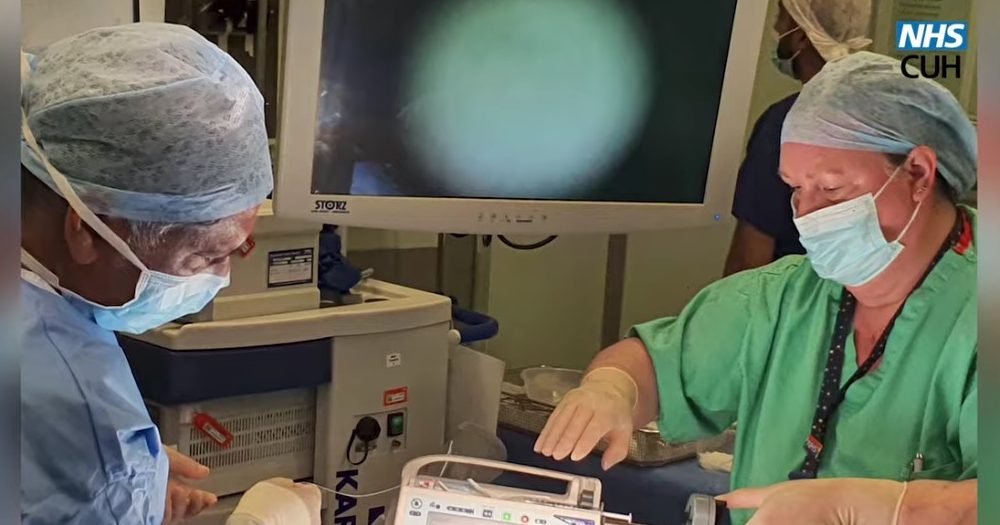Novel gene therapy helped a deaf baby hear for the first time

Gene therapy modifies or introduces genes into a patient's cells to treat or prevent diseases. For Opal Sandy, a baby born with auditory neuropathy, gene therapy was a groundbreaking treatment.
This rare genetic condition, caused by a mutation in the OTOF gene, disrupts nerve impulses traveling from the inner ear to the brain, resulting in deafness.
How does the therapy work?
At eleven months old, Opal received an infusion containing a harmless virus (AAV1) at Addenbrooke's Hospital in Cambridge. This virus delivered a working copy of the OTOF gene into her cochlea during surgery. The OTOF gene produces otoferlin, a protein essential for the communication between inner ear cells and the hearing nerve.
During the procedure, gene therapy was administered to Opal's right ear, while a cochlear implant was fitted in her left ear. Remarkably, within four weeks of the gene therapy, Opal began responding to sounds even without the cochlear implant.
Over the following weeks, clinicians observed continuous improvement in her hearing, and by 24 weeks, her hearing levels in the treated ear were close to normal for soft sounds, such as whispering.
Why does it matter?
This development is significant for several reasons:
- Root cause treatment: Traditional treatments like cochlear implants address hearing loss by bypassing damaged parts of the ear, but they do not correct the underlying genetic defect. Gene therapy, on the other hand, targets the root cause by restoring the function of the defective gene.
- Potential for permanent solution: Gene therapy offers the possibility of a long-term or permanent solution to genetic hearing loss. Professor Manohar Bance, the chief investigator of the CHORD trial, highlighted the groundbreaking nature of this therapy, stating, "This is hopefully the start of a new era for gene therapies for the inner ear and many types of hearing loss."
- Improved quality of life: Ultimately, for individuals with auditory neuropathy and potentially other conditions that could be addressed with gene therapies — particularly young children — early intervention is crucial for language development and social interaction. In that sense, Opal's ability to respond to sounds and communicate represents a significant improvement in her quality of life.
The successful treatment has far-reaching implications for the future of gene therapy in treating genetic hearing loss. Opal's ability to hear without a cochlear implant has already made a significant difference in her daily life.
"The development of genomic medicine and alternative treatments is vital for patients worldwide, and increasingly offers hope to children with previously incurable disorders," noted Dr. Richard Brown, a consultant pediatrician and investigator on the trial.
Gene therapy could become an attractive treatment option globally, potentially requiring less follow-up than current treatments and offering a viable solution in the developing world.
The context
The CHORD trial, sponsored by Regeneron and supported by NIHR Cambridge Clinical Research Facility and NIHR Cambridge Biomedical Research Centre, aims to explore the efficacy of gene therapy for auditory neuropathy. This condition affects approximately 20,000 people across the UK, Germany, France, Spain, and Italy. Children with this mutation often pass newborn hearing screenings because their inner ear hair cells can still respond to sound, but the signal does not reach the brain — leading to delayed speech development that becomes apparent around 2 or 3 years of age.
The success of the CHORD trial underscores the importance of continued research and development in genomic medicine, offering new hope for children with previously incurable disorders.
💡Did you know?
You can take your DHArab experience to the next level with our Premium Membership.👉 Click here to learn more
🛠️Featured tool
 Easy-Peasy
Easy-Peasy
An all-in-one AI tool offering the ability to build no-code AI Bots, create articles & social media posts, convert text into natural speech in 40+ languages, create and edit images, generate videos, and more.
👉 Click here to learn more


